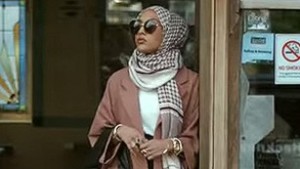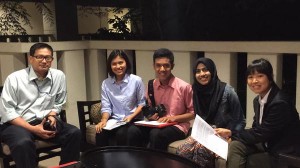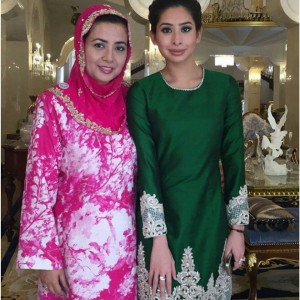This post was written by guest contributor Shereen Malherbe (@malherbegirl).

Mariah Idrissi is the first female Muslim model to feature in an H&M advertisement. The advert describes her look as ‘chic’ and Mariah definitely looks chic. Most are applauding this diverse and inclusive step from the world’s second largest retailer for representing Muslim women in the fashion world. The fashion industry is changing…or is it?
Muslim women have their own views and as the global Muslim population is the second-largest in the world, there will never be a formulaic response to what one Muslim woman wants. Our choices will depend on us individually and include the country we live in, our work and the primary reason some of us cover which is because of our faith, a highly private and personal affair despite the wearing of a headscarf turning it into a public one. Now when I return home to the UK, I am donning the ‘newest’ piece of kit which is the headscarf. It invites strangers to ask me all sorts of personal questions whilst others assume my new fashion taste is a throwback to the classic image of Audrey Hepburn. I, however, do not feel that stylish in my awkward ensembles that my teenage sisters have no qualms in telling me aren’t fashionable in the slightest. The new ‘me’ gasps in horror as I fold their handkerchief-sized pieces of clothing, a lot marketed and sold to them via the very same retailer.
The fashion industry needs to be more accommodating and change its representation of women. The female Muslim image in the media should be representative and extend to all parts of the consumerist market. Pick up a mainstream book, watch a Hollywood movie or flick through a glossy mag and I’m left wondering where is our contribution to society in these narratives? Often our viewpoint is given by those outside of the group and associated with negative connotations or images of oppression. The spending power of young Muslim women is beginning to start a trickle of representation, but we aren’t anywhere near mainstream markets for fashion, books or films. I once had a literary agent tell me that my novel would not fit into women’s fiction because my ‘chick-lit character jars with the Palestinian background’. Unsurprisingly, my Palestinian cousins and friends disagree. Why would they not experience the same feelings as girls in the West because of where they live? And why is a Muslim girl’s perspective of the world not considered important enough to be represented? It seems this observation is reflected by Ogilvy Noor’s Vice President (and one of the most influential Muslims in Britain) Shelina Janmohamed, says “There is so much in the news and political discussions about Muslims that brands understandably feel a bit nervous about reaching out to Muslim audiences.”
Why do these industry gatekeepers assume that people would rather be fed on a diet of stereotypes? And why aren’t realistic promotions of female Muslims celebrated and included in the mainstream? We are mainstream. We can challenge the status quo by demanding and buying alternatives. If they aren’t out there yet, create it, make it and support others that do so. Don’t feel pressured to fit in to what society portrays as the norm because it alienates large sections of our diverse society. Demand more representation, empower yourselves with your individual voice and consider where to spend your hard earned money. Do question the manipulative consumer giants who have started to see dollar signs appear on our headscarves.















